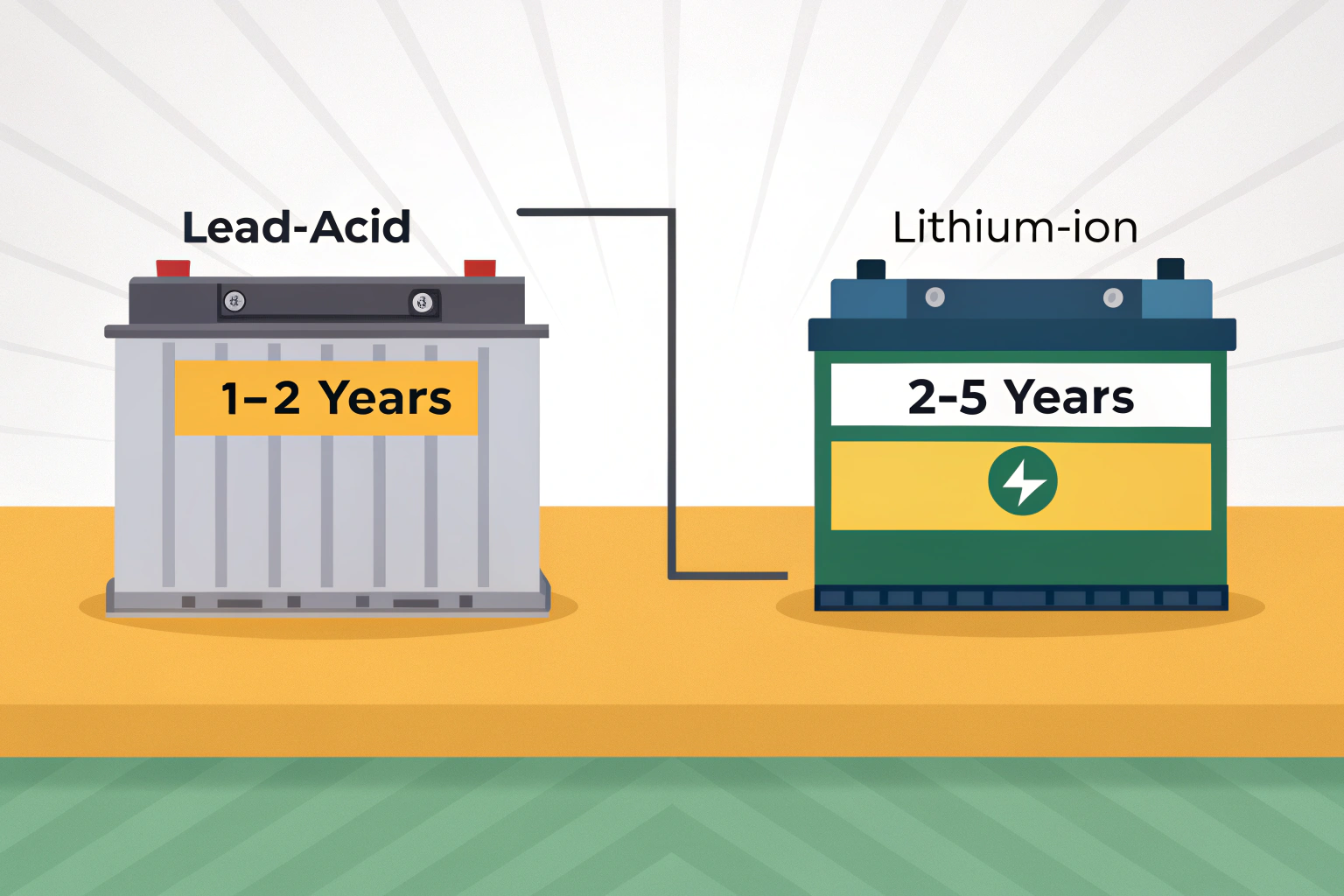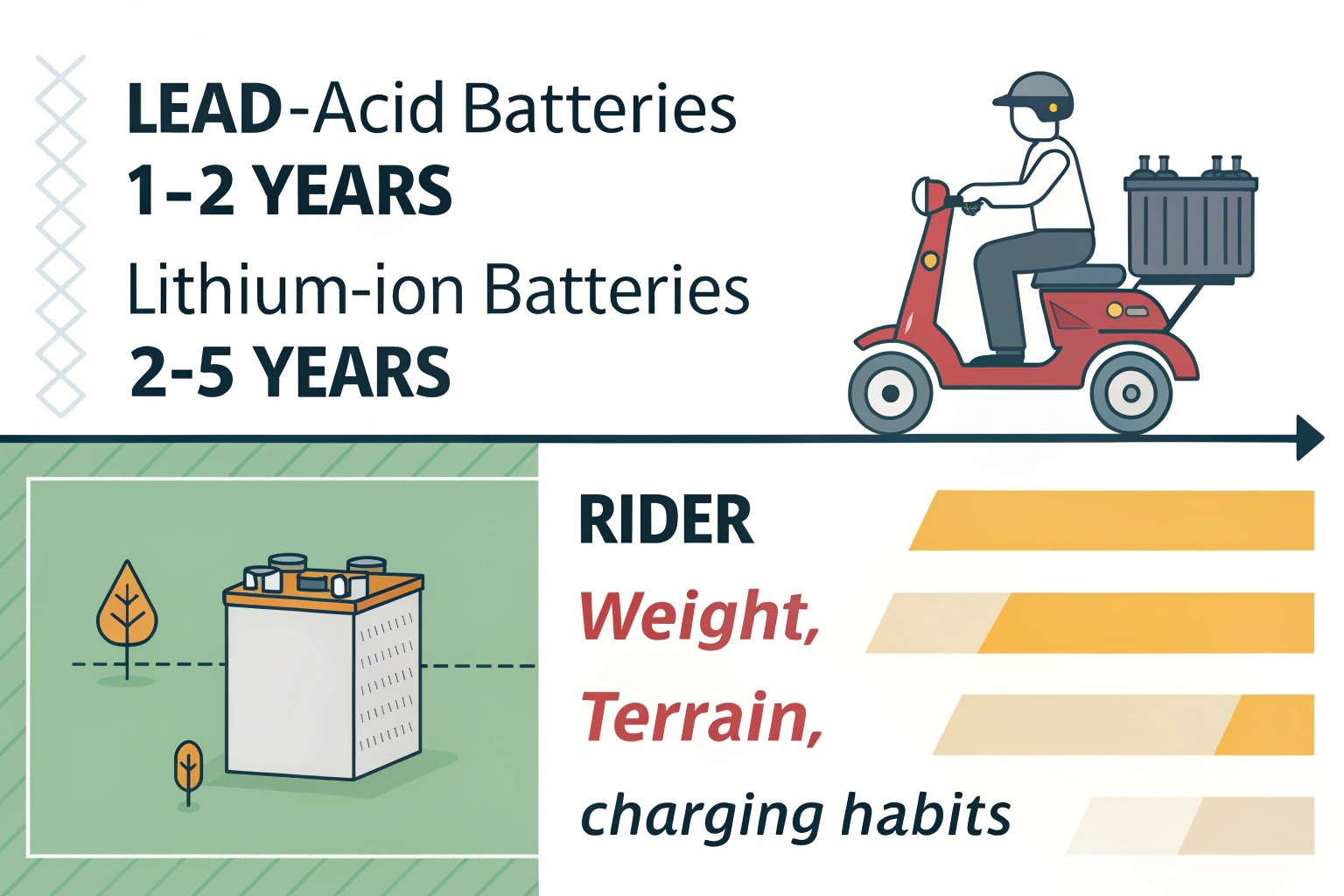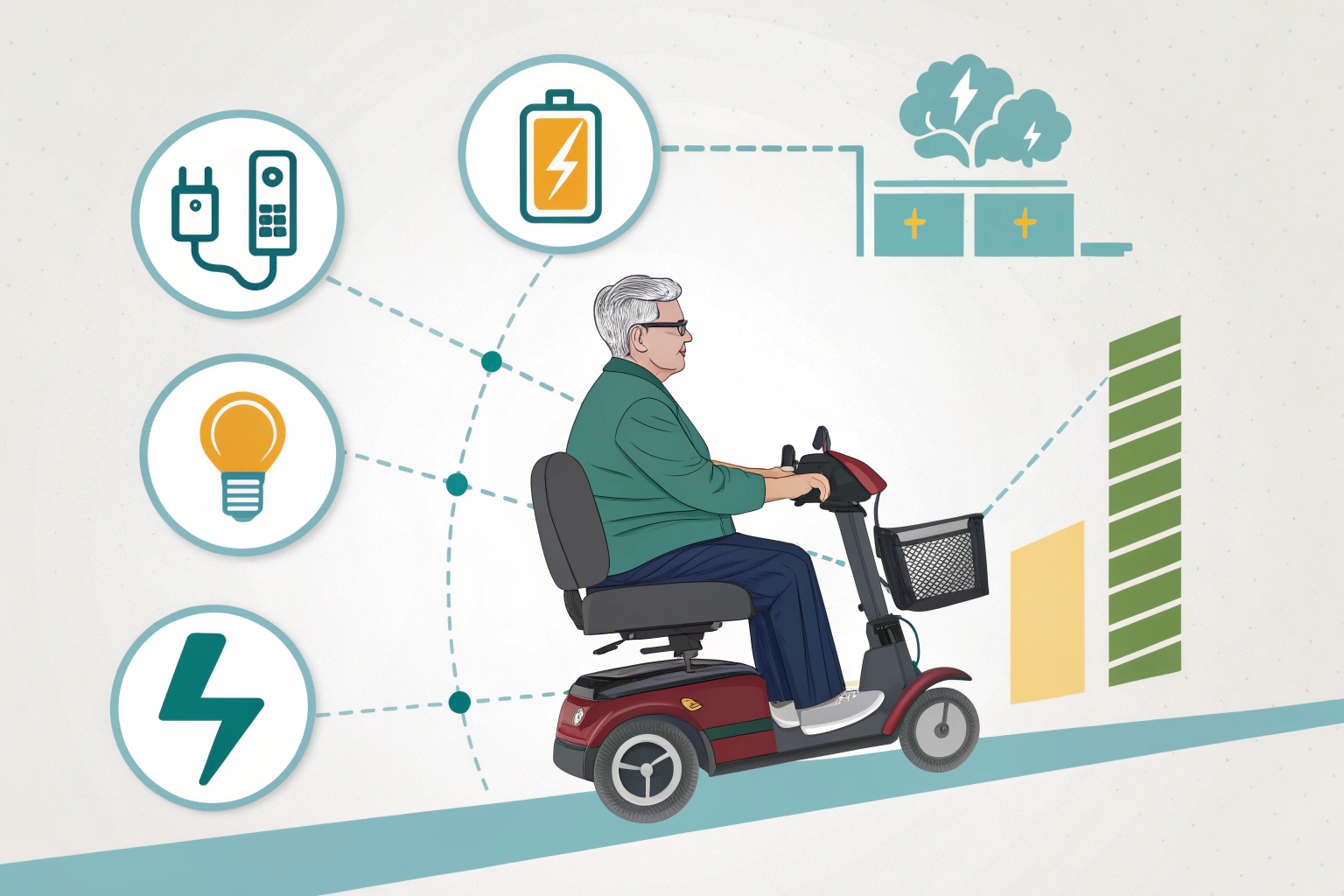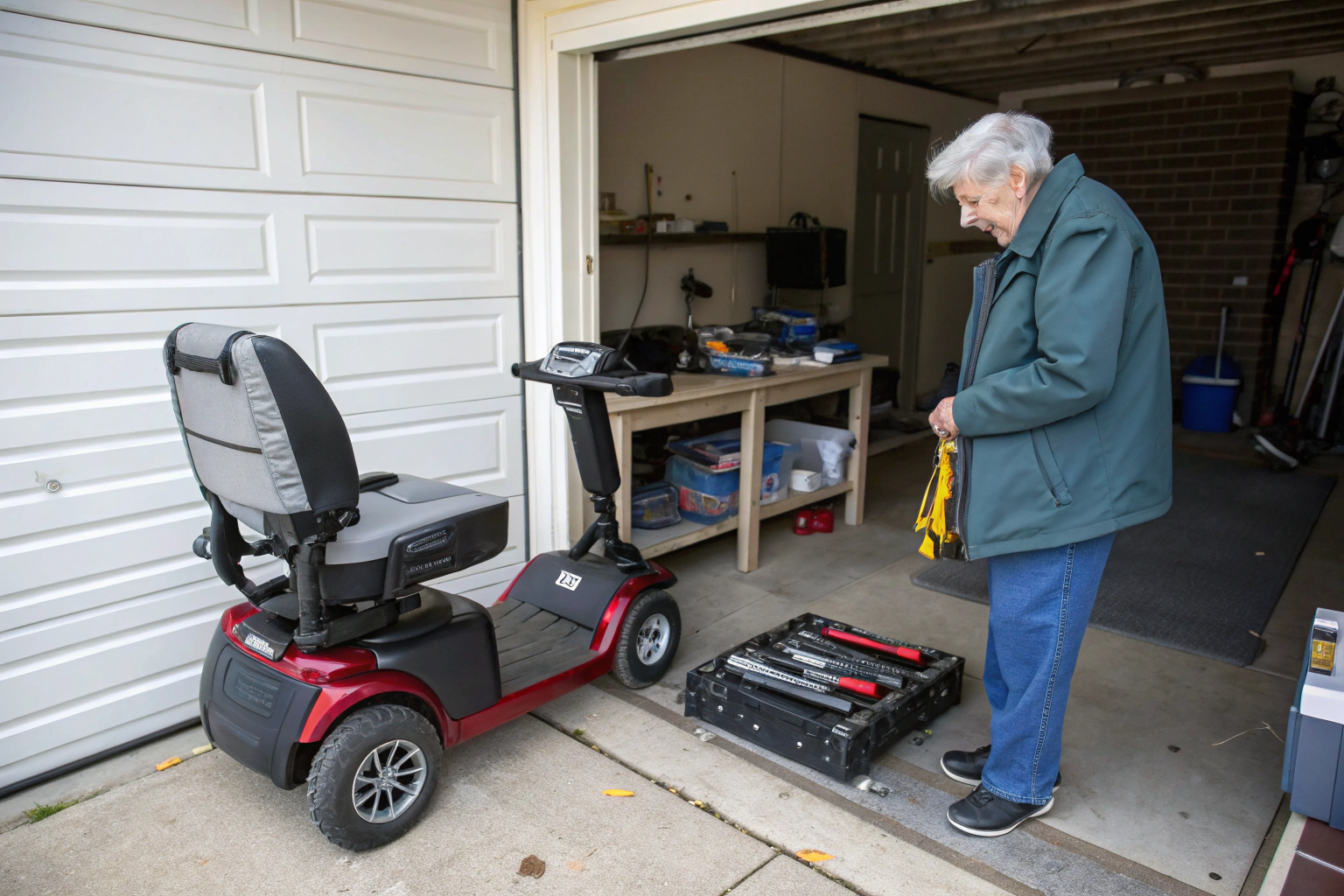Advertised battery life seems too good to be true. A dead battery can leave you stranded, destroying your confidence and independence. I'll share what our real-world factory data shows.
A mobility scooter battery's lifespan is 1-2 years for lead-acid and 2-5 years for lithium-ion. However, real-world factors like rider weight, terrain, and charging habits can significantly reduce both the daily range and overall lifespan compared to manufacturer claims.

The single biggest point of confusion for our importers—and their customers—is battery performance. The numbers you see on a product page are from lab tests: a lightweight rider on a perfectly flat surface, with no wind and at a steady speed. That's not reality. In my years of manufacturing and exporting these vehicles, I've seen firsthand how real-world conditions impact performance. Understanding the truth behind the numbers is the key to choosing the right battery and keeping your scooter reliable for years to come.
What Is the Average Lifespan of Different Mobility Scooter Battery Types?
Are you confused about which battery type to choose? A poor choice can lead to frequent, costly replacements and a lot of frustration. I'll explain the real differences I see every day.
Lead-acid batteries last about 1-2 years, while modern lithium-ion batteries last 2-5 years. Lithium costs more upfront but often provides better long-term value because it lasts much longer.

When a B2B client asks me which battery to configure for their market, I tell them it’s a choice between upfront cost and long-term performance. The two main technologies we work with are Chumbo-ácido selado (SLA) e Lithium-ion (specifically LiFePO4 for safety). SLA batteries are the traditional, heavier, and cheaper option. They are reliable technology, but they have a limited number of charge cycles and don’t like to be deeply discharged. Lithium batteries are a newer technology. They are much lighter, can handle deeper discharges, and offer significantly more charge cycles over their lifetime. For importers, this choice impacts the scooter’s final price, weight, and the after-sales support strategy they’ll need to offer.
Here is a simple table I use to help my clients decide:
| Recurso | Sealed Lead-Acid (SLA/AGM) | Lithium-ion (LiFePO4) |
|---|---|---|
| Average Lifespan | 12 - 24 months | 2 - 5+ years |
| Charge Cycles | 200 - 400 cycles | 1000 - 2000+ cycles |
| Peso | Heavy | Lightweight (about 1/3 of SLA) |
| Custo inicial | Baixo | Alto |
| Manutenção | Needs regular, full charges | Less sensitive to charging state |
| Melhor para | Budget-conscious buyers | Users wanting max performance & life |
What Factors Actually Affect Mobility Scooter Battery Life in Daily Use?
Is your battery dying much faster than you expected? You might be damaging its lifespan without even realizing it. Simple daily habits can have a huge impact on battery health.
The biggest factors are rider weight, hilly terrain, and extreme temperatures. Poor charging habits, like always running the battery completely empty or leaving it plugged in for days after charging, will also dramatically shorten its life.

A battery is a chemical device, and its performance is all about managing energy. Anything that makes the motor work harder will drain the battery faster and reduce its overall lifespan. I had a client in a very hilly city who found his lead-acid batteries were only lasting about 10 months. At the same time, another client in a flat, temperate region reported his customers were getting over two years from the exact same batteries. The environment and usage patterns make all the difference.
Here are the key factors that I always discuss with our distributors:
Rider Weight: The heavier the payload, the more energy the motor needs to draw from the battery. A scooter carrying 120kg will have a shorter range and put more strain on the battery than one carrying 70kg.
Terrain: Constantly climbing hills is the fastest way to drain a battery. It’s like driving a car up a mountain versus on a highway.
Temperature: Batteries hate extremes. High heat can degrade them over time, while extreme cold can temporarily reduce their capacity by up to 30-40%.
Driving Style: Frequent stops and starts with rapid acceleration use more power than cruising at a steady, moderate speed.
Hábitos de carregamento: This is the one you control the most. Always try to recharge the battery after use, and don’t let it sit empty for long periods. For lead-acid, give it a full, uninterrupted charge. For lithium, you have more flexibility, but avoiding constant deep discharge is still best practice.
How Far Can You Actually Travel on a Single Charge?
The advertised range seems impossible to achieve. This makes you worry about getting stuck somewhere far from home. I will show you how to estimate a realistic travel distance.
Expect your real-world travel range to be about 60-75% of the maximum advertised distance. A scooter advertised with a 25 km range will likely deliver 15-18 km in typical daily use.

This is the most common complaint I hear from end-users through our partners. “The box said 30 km, but I only got 20 km!” They aren’t wrong. As a manufacturer, we are required to state the maximum possible range, which is tested under perfect conditions. However, I always advise our B2B clients to be honest and transparent with their customers about what to expect in the real world. A scooter’s range is primarily determined by its capacidade da bateria, measured in Amp-hours (Ah). A higher Ah rating means more fuel in the tank. But how fast you use that fuel depends on the factors we just discussed.
Here is a more realistic guide to help you set expectations. This assumes an average rider on mixed terrain.
| Battery Capacity (Ah) | Advertised "Max" Range | Realistic Daily Range |
|---|---|---|
| 12Ah (Light Scooter) | Up to 20 km | 8-15km |
| 20Ah (Standard 4-Wheel) | Up to 25 km | 15 - 20 km |
| 40Ah (Heavy-Duty) | Up to 40 km | 30 - 38 km |
When planning a trip, always base your travel on the realistic range, not the advertised maximum. It's better to have extra battery power left over than to run out.
When Should You Replace Your Mobility Scooter Battery?
Is your scooter feeling slow and unreliable? It can be hard to tell if the problem is the battery or something else. Ignoring the signs can leave you powerless when you need it most.
You should replace your battery when its range drops below 50% of what it was when new. Other key signs include slow acceleration, struggling on small hills, or taking much longer to fully charge.

All rechargeable batteries degrade over time; they simply can’t hold as much power as they used to. The question is knowing when that decline becomes a real problem. For our distribution partners, providing replacement batteries is a key part of their business, so we train them to help customers identify a failing battery. You don’t have to be a technician to spot the warning signs. Your scooter will tell you everything you need to know through its performance. If you start to feel “range anxiety” and no longer trust your scooter for trips you used to make easily, it’s probably time for a new set of batteries.
Here are the most common signs that your battery is nearing the end of its life:
Dramatically Reduced Range: Your 20 km scooter now only goes 8 km. This is the clearest sign.
Sluggish Performance: It feels slow to get going and struggles on ramps or small hills that were once easy.
Longer Charging Times: A battery that used to take 8 hours to charge now takes 12 or more, yet still provides poor range.
The Battery Gauge Lies: The indicator might show a full charge, but it drops very quickly as soon as you start moving.
Age: If you have a lead-acid battery that is over two years old and you use it regularly, it is likely time for a replacement, even if it seems okay.
Physical Damage: Any bulging, cracking, or leaking from the battery case means you should stop using it immediately and replace it for safety reasons.
Conclusão
A battery's true lifespan depends on its type, how you use it, and how you care for it. Understanding these real-world factors helps you manage expectations and get the most from your scooter.

